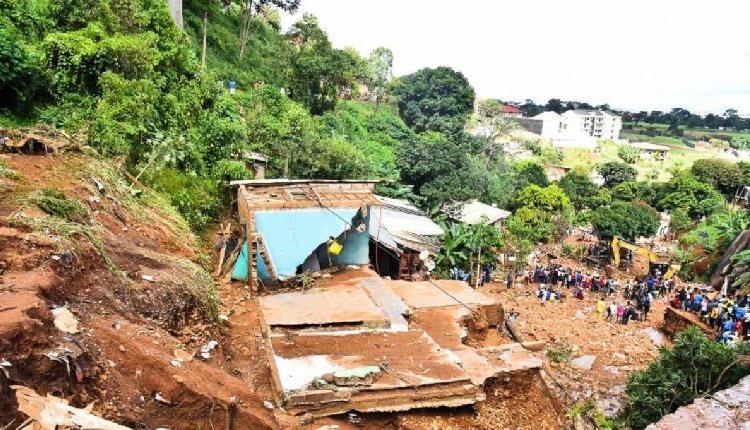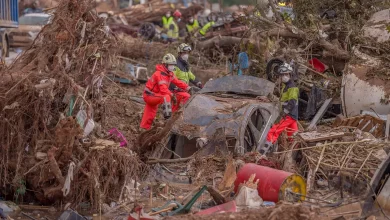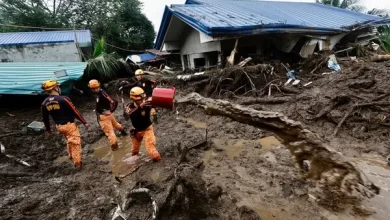In Cameroon’s Bamenda region, torrential rains triggered a landslide that led to significant casualties and left many trapped under layers of earth. Local authorities confirmed that three passenger buses and areas where workers were present were buried under debris. So far, four people have been reported dead, and approximately 50 individuals remain unaccounted for. Challenging weather conditions and hazardous terrain are complicating the ongoing rescue efforts. Frequent landslides during Cameroon’s rainy seasons underscore the need for improved infrastructure and preventative measures in vulnerable areas.
Reasons Behind the Increase in Natural Disasters Worldwide

Climate change, rapid urbanization, and environmental degradation are contributing to the rise of natural disasters across the globe, bringing increased environmental and social risks.
- The Impact of Climate Change
Global warming is disrupting climate patterns and triggering extreme weather events. The buildup of greenhouse gases in the atmosphere is causing temperatures to rise, which intensifies events such as droughts, floods, hurricanes, and wildfires. For example, rising temperatures contribute to sea-level rise, leading to frequent flooding in coastal areas. Landslides, like the recent one in Cameroon after heavy rains, are often the result of such extreme weather patterns.
- Deforestation and Soil Erosion
Deforestation and the expansion of agricultural land are causing significant changes in ecosystems. Forests play a crucial role in regulating the water cycle and stabilizing soil. When forests are destroyed, the risk of soil erosion and landslides increases, as there are no tree roots to hold the soil in place during heavy rains. This is especially evident in regions prone to landslides, such as Cameroon, where forest cover loss has exacerbated the frequency of such natural disasters.
- Rapid Urbanization and Uncontrolled Construction
As the global population grows, urbanization is expanding at a fast pace, leading to unplanned construction, especially in areas with limited infrastructure. Settlements built near rivers, mountainous areas, or forests face increased risks from natural disasters. Poor or inadequate water drainage systems contribute to urban flooding and waterlogging during heavy rains. In large cities with insufficient infrastructure, the impact of disasters becomes even more devastating, leading to increased casualties and property damage.
- Disruption of Ecosystem Balance
Ecosystems are essential for maintaining natural processes, but the disruption caused by agriculture, industry, and urbanization creates an environment more vulnerable to natural disasters. The destruction of coral reefs, for example, reduces coastal areas’ natural defenses against flooding, while the draining of wetlands removes natural filtration systems that help manage floodwaters. These ecosystem changes make certain regions more susceptible to severe weather impacts.
- Global Connectivity and the Economic Impact of Disasters
The rise in natural disasters worldwide has far-reaching economic consequences, affecting global supply chains and economies. Disasters in one area can disrupt supply chains worldwide. For instance, hurricanes or earthquakes not only impact the affected region but also disrupt trade routes and industrial production, leading to significant costs across various sectors such as agriculture, manufacturing, and energy.
Solutions and Disaster Risk Reduction Strategies
Addressing the rising impact of natural disasters requires a multifaceted approach:
Green Infrastructure and Preservation of Natural Barriers: Protecting forests and restoring wetlands provide natural defenses against disasters.
Disaster Risk Reduction Programs: Countries need comprehensive disaster management programs, especially in high-risk regions, to improve infrastructure and reduce vulnerabilities.
Climate-Friendly Policies: Reducing carbon emissions and promoting renewable energy sources can mitigate some of the adverse effects of climate change.
Scientific Research and Technology: Utilizing scientific data and early warning systems can help predict and manage the impact of disasters.


 Valencia Requests €31 Billion in Aid Following Devastating Floods
Valencia Requests €31 Billion in Aid Following Devastating Floods Death Toll from Tropical Storm Trami in the Philippines Rises to 97
Death Toll from Tropical Storm Trami in the Philippines Rises to 97 Israeli Forces Raid Gaza’s Kamal Adwan Hospital: Medical Staff and Patients Detained
Israeli Forces Raid Gaza’s Kamal Adwan Hospital: Medical Staff and Patients Detained Commonwealth Leaders Push UK for Slavery Reparations at Summit
Commonwealth Leaders Push UK for Slavery Reparations at Summit